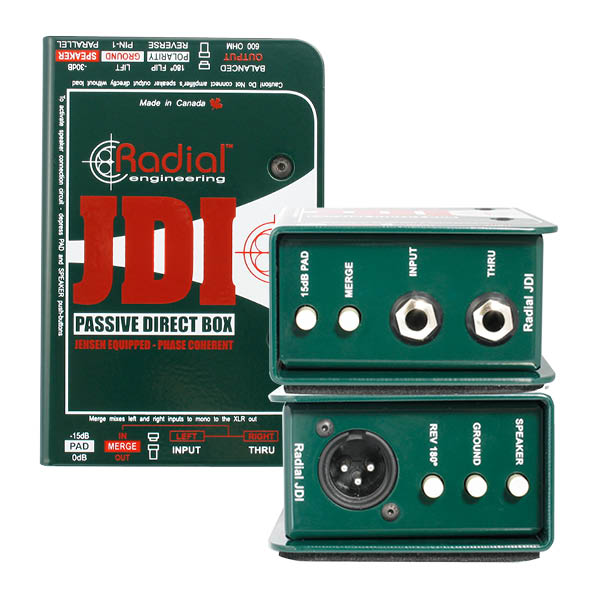Guys, do Di boxes have the ability to convert signals in reversed fashion- from mic level to instrument or line level signal?? I’ve heard that passives Di can do it ( that the signal can flow in both directions inside of these boxes) right? Big thanks
Dave, is it what u call “ back to back”??
Yes, passive DI boxes (intended for guitar) use a transformer. You can find information about "transformer operation" on the web I am sure, indeed I shall try to find some for you.
The principle is the same as a mains (aka "power") transformer in say an amplifier, it is a laminated iron core wound with many turns of copper wire and the principle is simply that any voltage applied to a winding is "transformed" to another voltage in proportion to the ratio of the two windings. Thus a transformer with 1000 turns on one winding will deliver the same voltage from a second winding of 1000 turns. That is a ratio of 'One to One' written 1:1.
A DI transformer might likely have a ratio of 10:1 and so take the signal from a guitar down from a few tens of millivolts, mV to a mV or so. If you inject a few mV into the XLR, mic input you will get a few tens of mV out of the secondary jack side.
Thus, feed line level into a DI's jack and send the XLR signal off several tens of mtrs to another (ideally identical) DI mic input and your line level is almost restored at the remote end. But, you might say, "why bother?" Well because the mic level signal is transformed down in voltage but up in current and is thus a "low impedance signal" and such signals are very robust and resistant to interference and HF loss. It is also by definition balanced.
Because V is transformed down and I (current) up there is an impedance relationship in any complete transformer circuit. The 'impednace' is transformed by the square of the ratio. Take a mic input on an AI or mixer? It will usually have an input Z of about 1.5 to 2 kOhms. The transformer primary will therefore 'see' 2k x 10x10 = 200k Ohms. Rather a low impedance for a guitar but in practice it often makes little difference.
We can see another use for this impedance transformation in valve amp output transformers. A valve might need a working load of say 5000 Ohms but the speaker is 16 Ohms. Do the math and you find you need a traff with a ratio of 56:1.
Transformers are not of course 100% efficient and so where the voltage needs to be accurate, say we need 12volt pretty closely, the winding ratio is 'kludged' to allow for losses. Clearly this can only work 'one way' so back to back bodges will always lose some signal. Also, the kludge only works accurately when the transformer is loaded close to its specification. But that is a whole other can of worms!
Dave.


